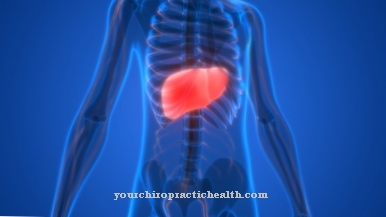gesture is non-verbal communication through arms, hands and head movements. It often accompanies verbal communication and supports the properties of language.
What is the gesture?

Gestures are extremely important in human evolution and have contributed to the development of language. They were even influenced by the development of the erect human being (Homo erectus) and later the development of the creative human being, Homo Faber. From then on he used his hand as a tool.
Humans used the hand for communication by means of gestures, from which the speech organs and acoustic communication could develop. Most scientists understand gesture to be the semiotic expressive potential of the human body using the head, arms and hands. So posture and body movements are not meant.
Some scientists take the term wider and add the unconscious body movements.Others understand gesture to be the entire non-verbal physical act with which someone wants to express something on purpose. Ritual gestures, facial expressions and sign language are also integrated in this definition.
Function & task
Language and gestures have developed in parallel throughout human history. To this day there is a close connection between verbal and gestural communication. Gestures play a major role in religious and social rites, but are used in a different function than everyday gestures.
Gestures in interpersonal communication are intended to establish, confirm, change or restore relationships. Books with lists of illustrative gestures were published as early as the 17th century. From the 19th century there were extensive instructions on how communication in public speeches can be emphasized by non-verbal gestures.
Gestures are divided into two groups, autonomous and speech-accompanying gestures. Autonomous gestures can replace language, for example when one points out an existing seat, i.e. when using a pointing gesture.
Gestures in connection with language are intended to emphasize what is said. These so-called illustrators have the goal of communicating something more clearly to the environment. With the help of the gesture, a clear picture of the scene is conveyed in the head, which is not always given by language alone.
The gesture is often a simplified form of language, but just like this it conveys an image, thought or memory of the narrator. The commonality of gestures and language: they have the same function at the same time, just express it in different ways. With the help of the gesture, a clear picture of the scene is conveyed in the head, which is not always the case with language.
You can find your medication here
➔ Medicines against concentration disordersIllnesses & ailments
A limited ability to express themselves in the area of gestures occurs primarily after accidents, when hands no longer function properly. However, abnormal gestures can also be seen in psychosomatic disorders. This can lead to a reduction in or an increase in drive. Often there are stereotypical movements.
Gestures are also disturbed in the course of aphasia. The language disorder occurs as a result of left brain disease, mainly after a stroke. Depending on its severity, aphasia affects not only speaking and understanding, but also reading, writing and arithmetic. Facial expressions and gestures are also often disturbed.
After accidents or brain diseases, those affected have to cope with the loss of language or speech. The gesture is then used to compensate, but does not do what the spoken language would do. The stronger the speech disorder, the more diverse gestures the person concerned produces. The gestures are then compensation and replacement for the restricted verbal communication. In a healthy person, the set of rules for gestures is generally understandable and is based on social norms.
Even under psychological stress there are changes that show up in very different ways. One of them considerably reduces his communication, so also restricts his gestures, the other shows increased nervousness with exaggerated gestures and inappropriate comments.
Tourette syndrome is a serious illness in which gestures change noticeably. The wrongdoing is perceived by the environment as extremely strange, but the patient does not use it consciously. Wrinkles of the nose, grimaces, blinking of the eyes and obscene gestures can be noticed. When confronted for the first time, the unsuspecting environment reacts disturbed. The person concerned is often stigmatized and withdraws more and more into isolation.
























.jpg)



